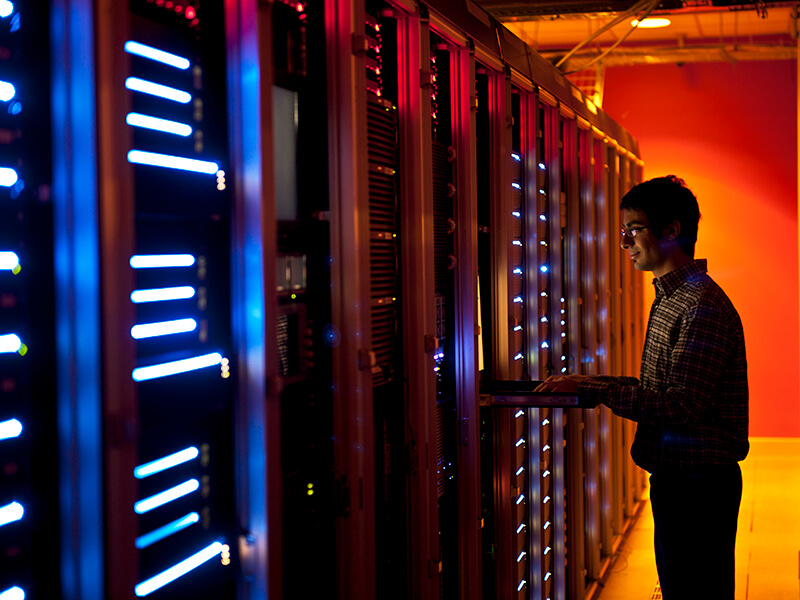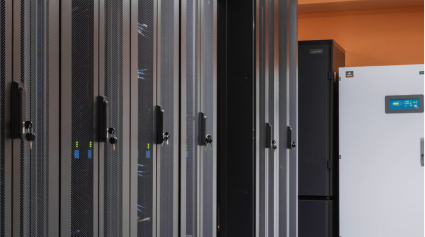If data centers were unplugged, much of modern life would grind to a halt, or be seriously disrupted. In the most serious cases, chaos would ensue. Productivity and stock markets would nosedive. Vital data would be lost or stranded. Emails would be unsent. On a more trivial level, gritty crime dramas would remain unstreamed. Lockdowns would drag even more than they sometimes do. Working from home would be laborious.
It’s hard to overstate the importance of data centers to our national infrastructure. Yet despite this, for much of the past two decades or so, the data center industry has had a relatively low profile among most investors. The industry has had something of a reputation for being solid but rather dull. (Unfair, I know.)
Thankfully, that has begun to change. The data center industry − meeting a seemingly insatiable corporate and consumer demand for cloud-based and streamed data − has moved closer to the investment mainstream. Vast “hyperscale” data centers continue to get bigger to meet growing market demand.
Investors have piled into the established markets short for Frankfurt, London, Amsterdam and Paris − or “FLAP”, as they’re more commonly referred to - and the United States.
As one data center veteran put it: during a recent conference panel discussion I participated in (the virtual Kickstart Europe 2021 conference, ‘Emerging Data Center Markets & Investments’), the pandemic has “solidified” digital infrastructure as a “core investment”.
Growth and investment has and will be fuelled by edge computing. By 2022, more than 50% of enterprise data will be created and processed outside the data center or cloud, up from less than 10% in 2019, research company Gartner has forecast.
The Land Grab for Data Center Construction
The Covid-19 pandemic further boosted demand for data as many of us were forced to work from home, use video calls rather than meet in person, and consume an ever-growing amount of streamed entertainment.
Land for developing data centers is at a premium. Delays last year to data center construction because of the pandemic has created a backlog of supply and demand for the data center market − especially in Europe, the Middle East and Africa (EMEA). The need for faster rollouts of data centers will further boost demand for modular, prefabricated data centers.
CBRE, a commercial real estate services and investment firm, has predicted that 2021 will be a record year for new supply in the data center industry, with 400 MW (megawatts) already in or through planning for development.
Frankfurt will see the highest amount of new supply in 2021, followed by London and Paris, according to the CBRE.
Competition is intensifying and pushing up land costs. Data center developers are competing with logistics companies for prime locations, according to CBRE, as retailers attempt to meet a surge in demand for online retail.
Emerging Data Center Markets
Which data center markets in EMEA will attract the most investment and grow the fastest?
I’m not going to try and pick winners within stock markets and countries. I’m no Warren Buffet.
However, several trends will dominate the EMEA data center investment market for this year, and at least a couple more to come.
Trend One: The Data Center Market Is Diversifying
FLAP is still the dominant market but is facing growing competition from so-called “emerging” or secondary markets in eastern Europe, including Poland and Russia, South-eastern Europe, for example, Bulgaria, and Asia, including Vietnam and the Philippines.
Within countries, new city data center markets are emerging and growing fast − including Berlin, Munich, Hamburg and Stockholm. The success of these rising data center hubs will depend on their latency compared to their bigger rivals. It will also hinge on whether ultra-fast and ultra-reliable data connections between provincial cities can reduce the need to build lots of new data centers to meet growing demand.
Green Powered Data Centers
Some investors may prefer to look further afield from Western Europe and be among the first to enter newer markets with good potential, such as in Asia and parts of Eastern Europe. This was one of the matters I discussed recently at the Kickstart conference. (Thanks to my fellow panellists, who included: Arnoud de Ridder, Associate Director Infrastructure at NIBC Bank, Frank de Frémery, who heads the data center advisory practice at AC Niellsen, a real estate advisory company, Mark Chester, partner specialising in data centers at Eversheds Sutherland, a law firm, and Nigel Clarkson, co-founder of Stratus Data Centres.)
Trend Two: Environmental Regulations
Data center owners are (rightly) having to comply with tougher environmental regulations for carbon emission and noise levels. To maintain its rapid growth and be a good corporate citizen, the data center industry must not just comply with regulations set by national and international regulators, but also raise the bar by setting its own standards. Voluntary industry initiatives − such as last month’s “Climate Neutral Data Centre Pact” in Europe between cloud infrastructure providers and data centre operators, which agreed to make European data centers in Europe climate neutral by 2030 − are a step in the right direction.
Trend Three: Explaining Our Industry Better
Explaining the environmental implications of exponential growth in digital infrastructure and how the data center industry is trying to balance meeting demand with helping the environment is the third big trend. The data center industry must get better at explaining in plain language, to consumers and investors, what it does, its environmental record, and how it has become an essential part of daily infrastructure for billions of people.
The 100-Million-Euro Question
If you were given 100 million euros to spend this year on digital infrastructure, what would you spend it on? That was the final question for our panel at the recent Kickstart conference.
Answers ranged from investing in secondary data center markets - from Warsaw to Barcelona, to Nigeria and Lisbon - to base station infrastructure for the rollout of 5G mobile networks.
The diversity of investment predictions is a sign of how vibrant and varied the EMEA data center market is. Technologies including edge computing, 5G and growing competition between cities, countries and regions, are set to move data centers out of the shadows and into investors’ top-performing portfolios.







